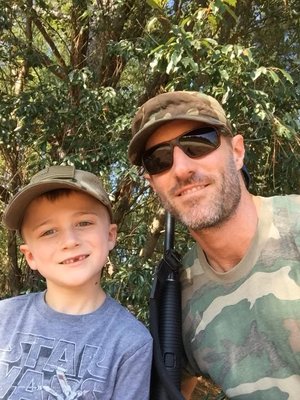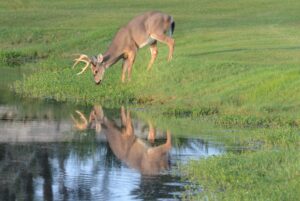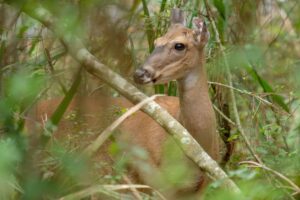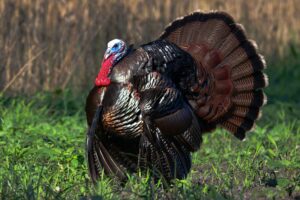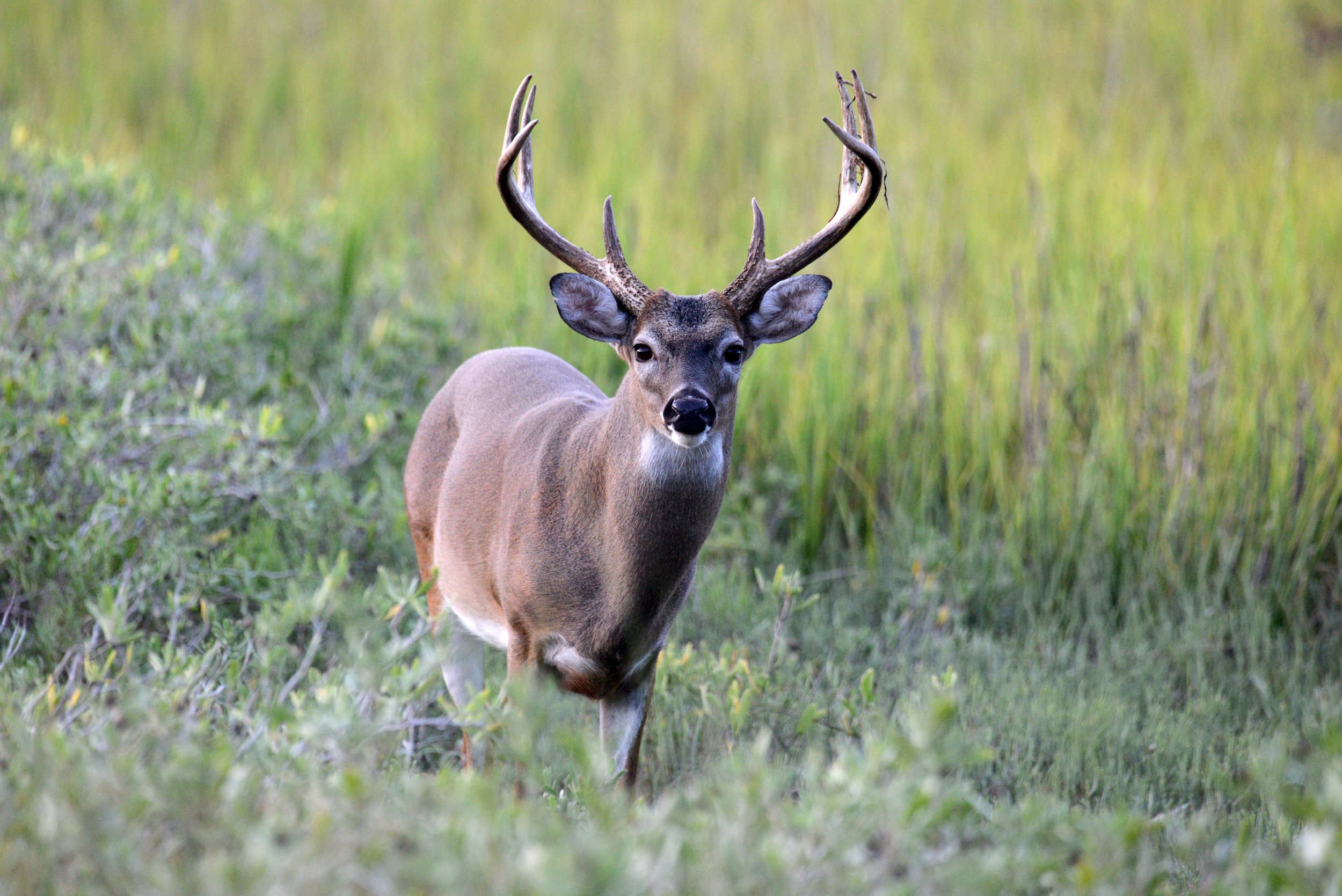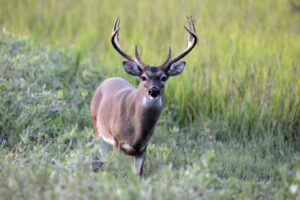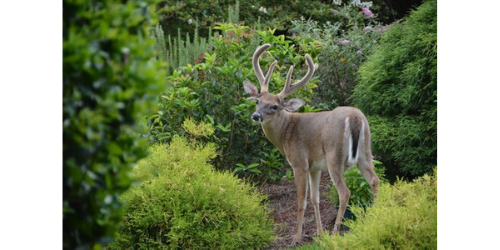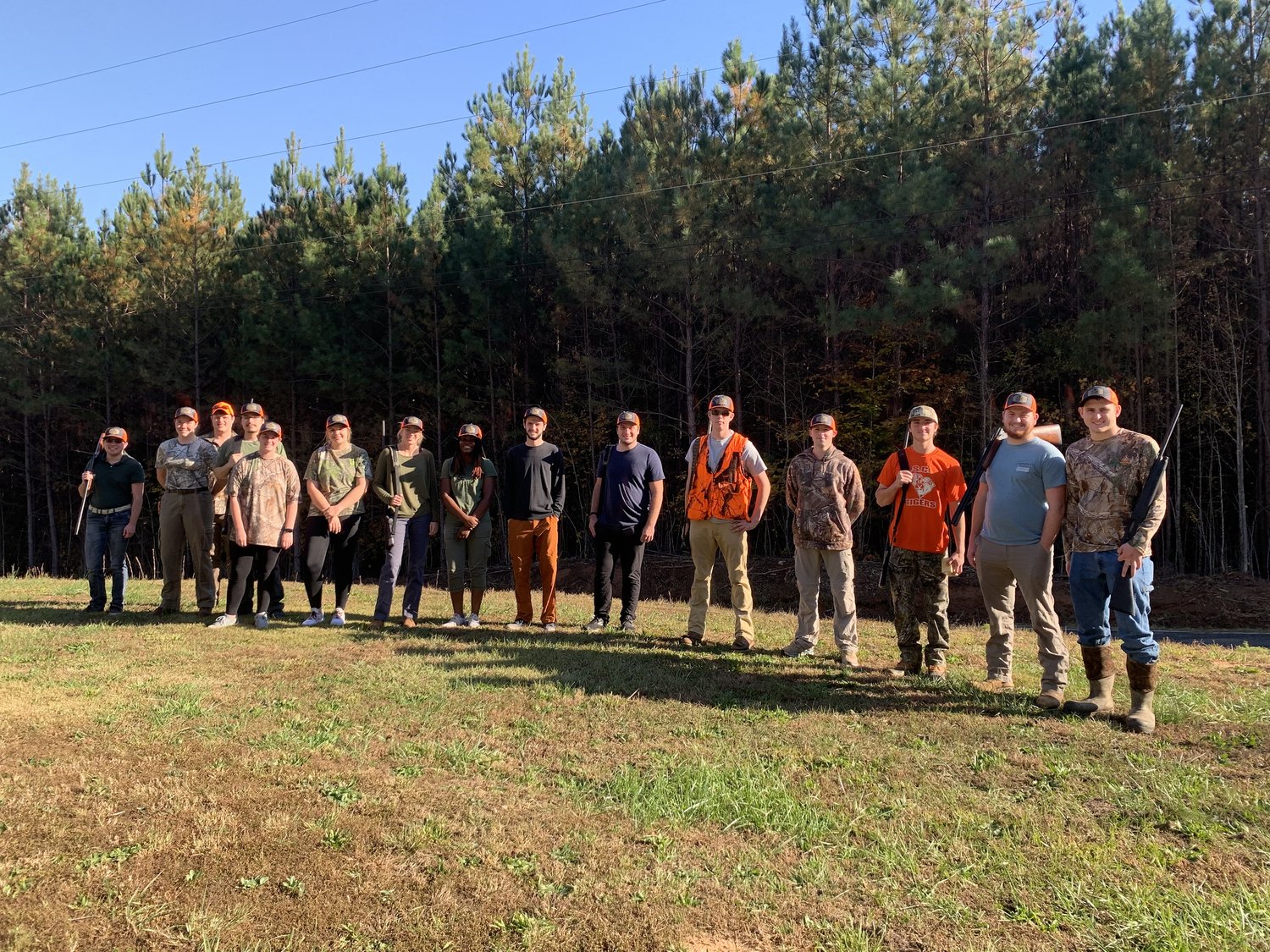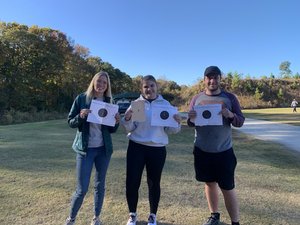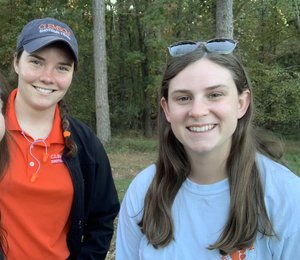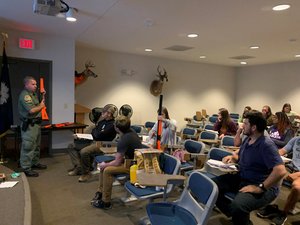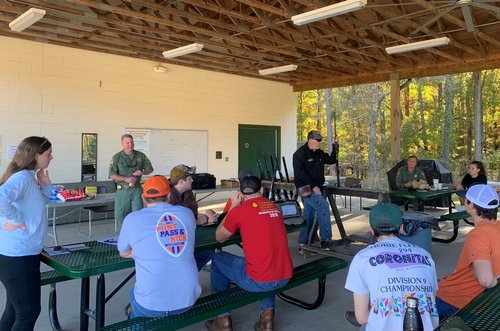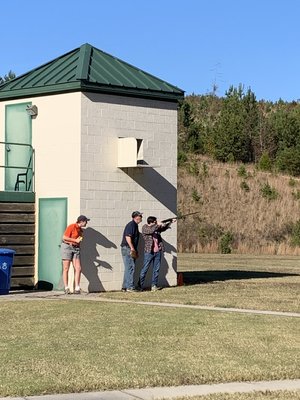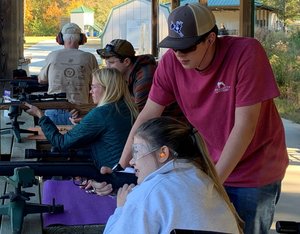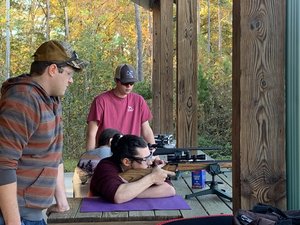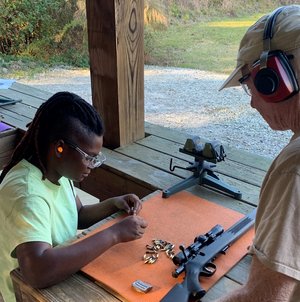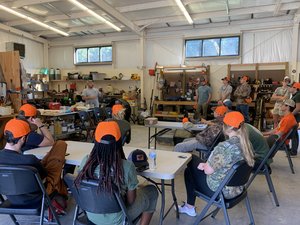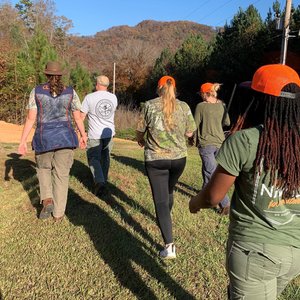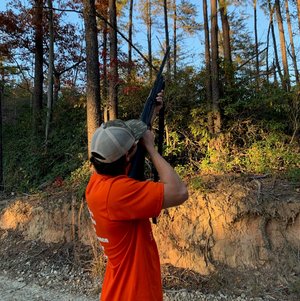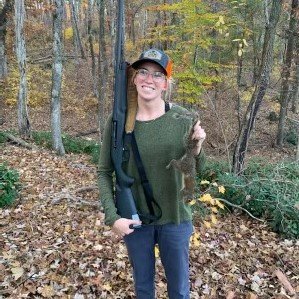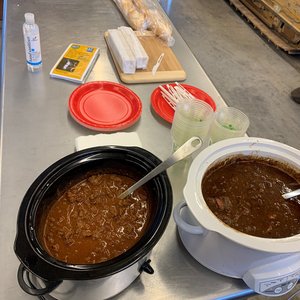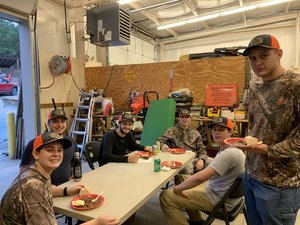Alex Killman is a guest writer for SCWF sharing his experiences of connecting with nature, enjoying the outdoors, and advocating for conservation – all through hunting.
Even for adults, hunting can be kind of boring at times. In the age we live in, you’d be hard-pressed to find a hunter, even a diehard, who doesn’t pull their phone out within the first couple hours of a hunt. Western hunters are probably a little different because they do a lot more stalking than us southeastern hunters, but I’m sure there’s a lot of Instagramming that goes on during those long glassing sessions as they wait for mule deer to appear in the distance. There’s so much peace and beauty to be found in the silence and stillness of the woods, away from all the technology and noise, but we’ve become so connected to it all that it’s hard to step away from it for even just a few hours.
Kids Have Boundless Energy
If it’s that hard for an adult to sit in the stillness of the woods, can you imagine what a 10-year-old is going through when they get dragged away from their fast-paced cartoons and video games into an adventure that doesn’t feel like much of an adventure to them? I can still remember the times as a kid when I’d follow my dad back to a deer stand. We’d sit for hours just waiting. I could literally feel the energy running through my arms and legs, needing to be let out by some form of movement. It was as if I was trying to crawl out of my own skin. It was tough. Eventually, all the seriousness of an adult hunt caused me to not want to be a part of it for a while. The seed was planted, and I eventually came back to it around the age of 20, but there were many teenage years spent in the suburbs away from the woods.
Make The Hunt About Them

When I started taking my son on hunts with me when he was 4 years old, I was very conscious of the fact that if I caused him to dread the idea of going to the woods, it would feel more like a chore that he’d learn to hate than a fun experience he’d look forward to. So, I did what any reasonable, 21st-century millennial parent would do. I brought an iPad and loads of snacks. For a parent who genuinely cares about their kids connecting with nature, it can feel very counter-productive to bring a screen into the woods. That fact is not lost on me. I care about and monitor the amount of screentime my kids get, but I also know that a bored kid in a deer stand is a kid who is going to constantly complain, constantly make noise, and inadvertently cause you to see zero animals. That last part is probably the most damaging. Though most of hunting is going home without meat for the table, seeing animals on a hunt – the fruit of so much labor – can be one of the most exciting parts of the experience that shows the reason we do what we do. It shows that hard work pays off. It shows what real patience can bring. And it shows your kids what makes you feel alive. So, giving them the ability to sit quietly in a deer stand or turkey blind long enough to see a doe appear can make the whole thing worth it. When the animals appear, the screen can go away and the binoculars can come out.
In general, I don’t like giving my kids a lot of candy, but I’ve found that one of the best ways to create a lasting, positive association with going out in nature is by making their absolute favorite snacks a part of the experience. You’re not just going to the woods. You’re taking their favorite parts of life and joining them together with the great outdoors.
Prep Locations Just for Them
Again, remember that when you’re taking your kids to the woods, you’re not doing it to tag a trophy. You’re doing it to give your kids a passion for the outdoors. That’s the prime objective. So, save your best spots and the intense hunts for yourself. Reserve a couple spots just for taking your kids a few times throughout the season. If you’ve got private land in SC, setting out a feeder with corn can give your kid a lot of great action that will leave a lasting impression, even if you only plan on observing. If you only prep spots for you and don’t take your kids there until you’ve had a chance to hunt them, you’ll likely end up seeing nothing when you finally get around to taking your son or daughter.
Don’t Plan on Staying Long
One of the quickest ways to make your kids hate hunting is by keeping them in a stand or blind for hours on end, hoping to tag something at last light. If your kids are very young (4-7 years old), a hunt may only last around 2 hours. That’s a long time for a young kid who isn’t used to it. Don’t know how long to stay? Don’t worry, they’ll tell you. If your kid is asking when you’ll be done about every 10 minutes, it’s time to smile and say, “If you’re ready, I’m ready, buddy.” Making them stick it out more than their age or maturity level can handle is a sure-fire way to make them dread the idea of going back. The older they get, the more you can push their time limits.
Decrease Screen Time as They Age
If you’re like me and you opt to let your kids take a screen in the woods, remember, you don’t want that to be a lifetime habit. It’s a means to an end. So, as they age, it’s a good idea to decrease the amount of time they’re on screens while on stand. When my son was first starting out, I’d let him watch a movie the whole time we were there. But as he got older, I’d start having him wait for a little while before getting on. Then, when deer or turkeys would appear, I’d have him put it away for a bit to observe. He’s 8 years old now, and during this past turkey season, he had his first screen-free hunt. Still had a ton of snacks, though. Hunting just wouldn’t be hunting without snacks.
Never Let Them See Your Frustration
It can be extremely easy to become frustrated when your kids make noise, move, or cause you to miss an opportunity. But we have to remember that they’re still learning. They’re brand new to it. They’re not perfect. Our outward frustration with them making a mistake can cause them to feel that we’re disappointed with them and that they’re not good enough to be there. Some kids will shut down and just decide that they don’t want to go back if they can’t live up to their parents’ high standards. So, learning to whisper, “It’s ok, buddy. You’re doing great!” when they drop something in the stand will go a long way with their self-esteem. On the other hand, having them associate a trip to the woods with disappointment from dad will always cast a shadow over the whole thing.
Hunting Isn’t the Most Important Thing
It’s crazy to think about, but hunting might not always be around. If we don’t pass it down to them, they certainly won’t pass it down to their children. So, we have to keep that in mind when we’re planning our trips to the woods with them. While our kids are young, even in their pre-teen and young teenage years, we only need to accomplish two things: get them outdoors and make it fun for them. That’s it. If we accomplish those two things, we’ve done our job. Every kid isn’t going to grow up to be a hunter. That’s just the reality. But hunting isn’t the most important thing either. Making great memories with our kids is. Doing it outdoors is just a bonus.

